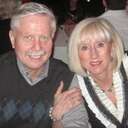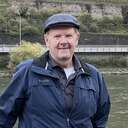Rapid Recovery Protocol: What Should Heart Surgery Patients Know?
Written By: Adam Pick, Patient Advocate & Author
Medical Expert: Dr. Marc Gerdisch, Chief of Cardiac Surgery at Franciscan Health
Published: June 23, 2020
One of the big concerns patients have about heart surgery is… the recovery. As a result, I receive many patient questions including “How long does the recovery take?”, “How much pain will I experience?”, “When can I exercise?”, and “When will I feel normal again?”
The great news for patients is that next-generation devices, advanced technologies and new processes have been developed to accelerate patient recovery and minimize pain. To illustrate this point, I wanted to share this new video with our community. As you will see, this video includes 4 quick and extraordinary patient recoveries. In some cases, the patients filmed themselves doing incredible things shortly after surgery.
The patients featured in this video include:
- Tim Derloshon, an aortic valve replacement re-operation patient, who was running 7 miles and swinging a golf club 23 days after surgery
- Matt Shutte, a mechanical aortic valve replacement patient, who was batting baseballs just 31 days post-op
- Timothy Kennedy, a minimally-invasive mitral valve repair patient, who was practicing his golf swing 28 days after surgery
- Todd Runnebohm, a patient who experienced no pain 3 days after minimally-invasive mitral valve repair
Here’s something you need to know…
Each of these patients benefitted from a new “Rapid Recovery Protocol” designed by Dr. Marc Gerdisch, a leading cardiac surgeon at Franciscan Health in Indianapolis, Indiana. In addition to these patients, Dr. Gerdisch has successfully treated over 100 patients from the HeartValveSurgery.com community.
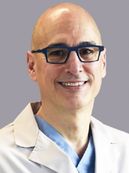 Dr. Marc Gerdisch
Dr. Marc Gerdisch
To learn more about these amazing patient recoveries, I contacted Dr. Gerdisch. During our call, Dr. Gerdisch answered several important questions about the Rapid Recovery Protocol that has been implemented at Franciscan Health.
What Are The Goals of The Rapid Recovery Protocol?
Dr. Gerdisch: When we set about developing the Franciscan Rapid Recovery Protocol, we asked ourselves; from the patients’ perspective, what are the most important concerns of the cardiac surgery experience? The next question is… How do we achieve consistent fulfillment of patients’ desires?
The first goal of cardiac surgery will always be perfect surgery, with the right operation performed at the right time, addressing the entirety of the patient’s condition. Next is a less disruptive path to the heart. We perform all possible valve operations minimally-invasively including many concomitant procedures, with the same precision as open operations. A small incision has many obvious advantages, but not all cardiac operations may be performed through a small incision. Sternotomy remains the best means of performing many complex cardiac and great vessel operations.
People are willing to tolerate pain to save or extend their lives. However, pain increases anxiety, diminishes mobility, interrupts sleep, elevates blood pressure and heart rate and undermines our sense of well-being. A “speedy” return to a full life is impossible for someone limited by pain. Some discomfort is inevitable with essentially any procedure, but a focused approach to minimizing and even eliminating pain is a principle component of our Rapid Recovery Protocol. People’s well-being is linked to their sense of body wholeness following surgery. It begins immediately after the procedure and persists for as long as they are aware of something “different.”
We want to take the “different” away.
How Does The Rapid Recovery Protocol Accelerate Patient Mobility?
Dr. Gerdisch: To feel whole, people need their full mobility restored, and to be able do what they want when they want. We pursued an aggressive process for restoring patients’ physical integrity as soon as possible. When combined with techniques to eliminate pain, it changes the trajectory of patients after surgery – both physically and emotionally.
Having experience with thoracoscopic and robotic procedures, we realized that the key to minimal pain following minimally-invasive surgery was to limit the operation to a single small incision, avoid dividing bone, and be able to treat the discomfort of the small single site with application of focal nerve block. We use cryoanalgesia (freezing) energy to create a temporary block of the nerves at the site. The result is localized numbness and little if any discomfort. After several weeks, the numbness resolves. Meanwhile, patients are back to their lives without limitation of pain, either at rest or with activity.
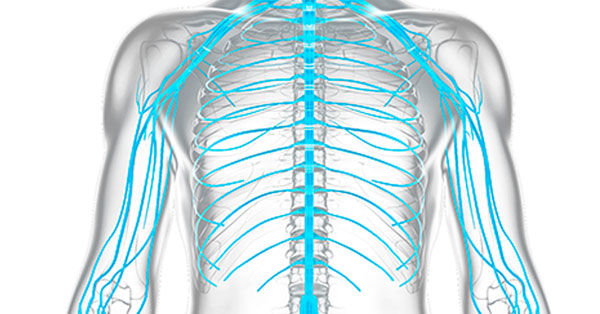 Cryoanalgesia for Nerve Blocks
Cryoanalgesia for Nerve Blocks
For patients undergoing complex multi-valve or redo operations, a sternotomy may provide the best means of creating the ideal technical outcome. Recognizing that sternotomy is an integral part of many operations, we dedicated substantial resources to driving down every possible limitation a sternotomy patient might encounter. This required a multifaceted process whereby we established the optimal method of restoring full functional integrity to the bone and then progressively expedited phases of recovery, establishing the path to maximal mobility and strength for each patient.
What Role Does Rigid Plate Fixation Have In The Rapid Recovery Protocol?
Dr. Gerdisch: If an orthopedic or maxillofacial surgeon needs to restore a bone to function and provide optimal opportunity for solid healing, they use titanium plates and screws to establish rigid immobility of the bone in all directions. It is a practice dating back decades called rigid plate fixation (RPF). Indeed, it would seem silly of them to simply wrap some wires around the bone, twist them down and be finished. Yet every year, hundreds of thousands of sterna are repaired with wires and left to heal as they may.
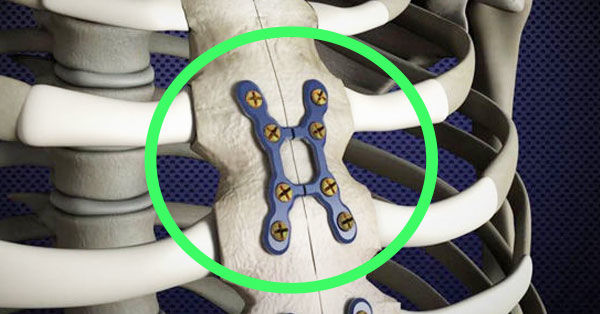 Rigid Sternal Fixation (Source: Zimmer-Biomet)
Rigid Sternal Fixation (Source: Zimmer-Biomet)
We sought to change the entire experience for patients by doing a proper bone repair whenever we divide the sternum. It would no longer be considered just closing after cardiac surgery, but an orthopedic procedure we performed as the final step of the operation, impacting the patients’ future. It does require thoughtful surgical repair of the bone, with practice and attention to detail. In fact, we obtained sternal x-rays on the first 60 cases to be certain the screws were correct length and scrutinized our technique.
Since then, we and our patients have enjoyed integrating RPF as one of the cornerstones of our Rapid Recovery Protocol. RPF creates a much more stable and therefore comfortable repair immediately, which has translated into quick restoration of normalcy for our patients.
How Has The Rapid Recovery Protocol Enhanced The Patient Experience?
Dr. Gerdisch: In addition to the patient videos you have seen, pain medication requirements are drastically reduced, and mobility is remarkably enhanced. All of our patients participate in our rapid physical therapy protocol, allowing them to lift 15 pounds the day after surgery, and use their arms to get out of bed and up and down from a chair or toilet. In other words, nearly no sternal precautions and consequently nearly everyone goes home soon and rarely to an extended care facility.
With greater mobility and minimal pain medication come better bowel and lung function, and a more positive mental perspective. After discharge patients are given instructions to continue exercising and lifting heavier at a tailored but uniquely rapid pace.
Do You Encourage A Holistic Approach To Health For Patients?
Dr. Gerdisch: The Rapid Recovery Protocol is made possible by achieving a comfortable and physically intact patient who can tolerate faster progression of physical activity and has the psychological outlook and stamina to return a full active life. Rapid recovery actually begins before surgery when patients participate in our Enhanced Recovery After Surgery – Cardiac program, which encompasses nutritional optimization, endocrinologic evaluation and treatment, smoking cessation and preoperative exercise.
It carries through the entire experience and into patients’ future, as they become part of our family. Our goal is to give people very little to remember about having heart surgery, other than the start to a better life.
I hope that helped you learn how the Rapid Recovery Protocol developed by Dr. Gerdisch and his team at Franciscan Health is helping patient from our community. Many thanks to Dr. Gerdisch for integrating several new technologies including cryoanalgesia and rigid plating fixation along with exercise and nutrition to stimulate a great recovery from heart surgery.
Related articles:
- Cryoanalgesia for Heart Surgery Post-Op Pain
- Technology Update: SternaLock Blu May Bring Faster Recovery & Less Pain for Patients
- Dr. Marc Gerdisch Successfully Treats 100 Patients at HeartValveSurgery.com
Keep on tickin!
Adam

